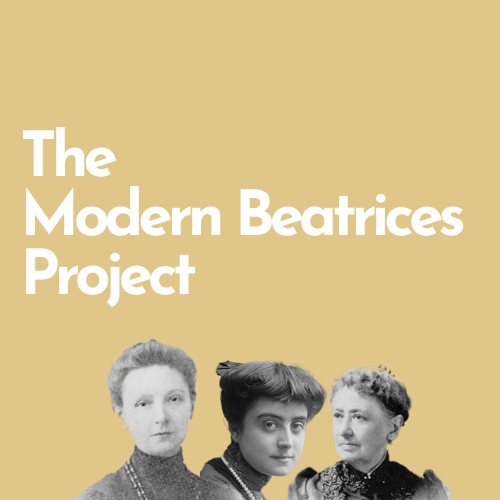Women in the Spotlight: Female Protagonism in Dante Studies and Literature between the 19th and 20th Centuries
The second half of the 19th century marked a crucial turning point for women's participation in Dante studies, leading to a fundamental transition from the private sphere of reading to the public sphere of writing. Inspired by the Dante centenary celebrations of 1865, women established themselves in the literary and academic landscape, making significant contributions to the production of works and studies on Dante.
Articles, translations, biographies, adaptations for children, and critical analyses, all penned by women, flooded magazines and bookshops, demonstrating a lively interest in the Supreme Poet. Overcoming the obstacles of a predominantly male and highly competitive environment, these authors managed to carve out a prominent space for themselves, publishing with the most prestigious publishing houses such as Barbera, Le Monnier, C. Clausen, G. B. Paravia, L. Olschki, and Bemporad.
These publishing houses, among the most prestigious of the time, offered a prime stage for women's voices, helping to shape a more inclusive and dynamic cultural landscape and to spread a more articulated vision of Dante's work. Warmly welcomed by the most authoritative literary journals of the time, including La Cultura, Nuova Antologia, La Rassegna Nazionale, and La Rassegna della Letteratura Italiana, these works contributed not only to consolidating Dante's figure as a national cultural heritage but also to recognizing women's authority in the interpretation and popularization of his work.
By the end of the century, women were already active and well-recognized participants in the world of Dante studies, publishing articles and contributions in specialized journals such as L'Alighieri, later renamed Giornale Dantesco, and Il Nuovo Convito. Their growing visibility was evidenced by the organization of important cultural events, such as the Beatrice Exhibition and the centenary celebrations of 1921, and by their participation in conferences and the activities of Dante societies..
Where did they come from?
The map shows that Veneto (11) and Lombardy (17) have the highest number of authors born there. These regions, especially larger cities like Venice, Verona, and Milan, offered more cultural opportunities and a larger educated class. While smaller provinces had fewer female authors, they presented a more diverse range of experiences, often limited by economic and social constraints. Tuscany, with Florence, Livorno, and Montalcino, contributed 8 authors. Sardinia, Basilicata, and Molise, however, are absent from the Modern Beatrices Archive.
What were their occupations and/or professions?
Women Dante scholars of the 19th and early 20th centuries were remarkably versatile, balancing teaching with literary and cultural pursuits. As authors, critics, and journalists, they played a pivotal role in shaping the cultural landscape of their time, advocating for social causes such as women's education and suffrage.
